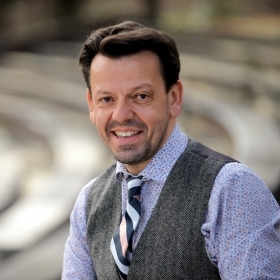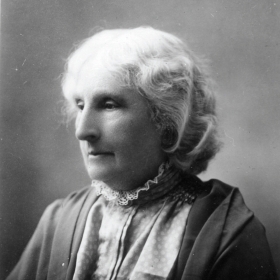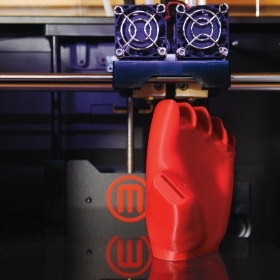The next time you find yourself in search of adventure, consider a trip to Lake Baikal in Russia: a flight to Frankfurt, followed by a transfer to Moscow, and then a red-eye east across the Siberian wilderness to Irkutsk, a cultural and historical outpost of around 590,000 people. From there, it’s just a (relatively) quick bus ride and boat voyage to Irkutsk State University’s biological field station, where Marianne Moore, professor of biological sciences, has focused almost 15 years of research.
Professor Moore calls Lake Baikal the holy land for aquatic ecologists. It’s the oldest lake in the world (25 million years old), the deepest lake in the world (over one mile deep), and it holds the greatest volume of fresh water in the world (a full 20 percent of the world’s liquid fresh water). As a consequence of its superlative age, size, and depth, Lake Baikal also has the highest level of biodiversity in the world: More species of plants and animals live in Lake Baikal than live in any other lake, and a large number of those species are unique to the lake.
Fifteen years ago, Moore collaborated with Professor of Russian Thomas Hodge to create the course entitled Lake Baikal: The Soul of Siberia, which sends Wellesley students to the lake every other year to study the scientific and cultural values of the region. When she arrived at the lake with the first group of Wellesley students, Moore was met with an unexpected treasure trove of data that a family of Russian scientists had been quietly collecting over three generations. Since the 1940s, the scientists had taken samples of the lake, noting water transparency, the amount of chlorophyll in the water, and identifying different species of plankton.
“This data set was extraordinary,” Moore remembers. “It has no match in the West. We’re really indebted to those scientists. The first time I heard about the data, I thought there had to be an error in translation, because I couldn’t believe [such data] existed.” Moore analyzed the data, which led to a National Science Foundation grant that brought together a large group of scientists from the United States and Russia to study environmental changes in Lake Baikal over time.
“The lake is warming fast—three times faster than global annual air temperatures,” Moore says, noting that biological changes in the lake are consistent with the warming. Warm-water species in the lake have tripled in abundance, while the number of cold-water species—which are unique to the lake—have either remained steady or declined. “One of our goals is to answer the question of how the cold-water species adapt to climate change, and whether they’ll be replaced by warm-water species that are in the lake.”
Moore’s analysis of the data also led to a notable side project. During their time at Lake Baikal, Moore and Ted Ozersky, a postdoctoral fellow at Wellesley, uncovered another scientist’s 40-year collection of skulls of nerpa, a seal that is unique to the lake. “The seal teeth form an archive of chemical conditions in the lake going back to the 1930s,” Ozersky says, explaining that since the teeth add another level of dentin every year, they’re almost like the rings of a tree. “Each layer is essentially a sponge for the chemical conditions in the lake,” Ozersky continues. “We’re mainly looking at concentrations of toxic heavy metals in the teeth, and how those concentrations change over time.”
“There are signs that the lake is responding, at least in part, to human pressure,” Moore says. “We need to know more about the environmental health of this system to help protect it as both a scientific and economic resource.”








We ask that those who engage in Wellesley magazine's online community act with honesty, integrity, and respect. (Remember the honor code, alums?) We reserve the right to remove comments by impersonators or comments that are not civil and relevant to the subject at hand. By posting here, you are permitting Wellesley magazine to edit and republish your comment in all media. Please remember that all posts are public.